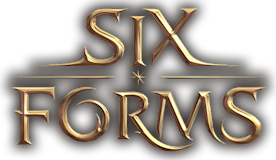Babysitting Mana & How the Six Forms Energy Cube Was Born
From the beginning, a core Six Forms game mechanic was to incorporate a resource system that players would use to play cards. Having only played Yu-Gi-Oh, from 2000-2005, I thought my idea was somewhat original for a TCG. It was not until many years later that I discovered MTG had already pioneered the idea in the TCG format. From there, other games I researched proved the idea had legs and was already living successfully in other games. However, it was not 100% clear what resources spending mechanic was best for my game.
The Resource Systems I Tested
I tested tons of mechanics around "paying" to play cards. Here are just a few:
- Stamina: a capped resource that takes time to regenerate.
- Coins: uncapped depletable resources; you gain a fixed amount of each turn.
- Upgradeable tokens: like coins but can be upgraded.
- Multicolor shards: non-card multicolor renewable resources you get one of each turn.
- Multicolor cards: You get one of these renewable resources, each with unique attributes, from a player-shared deck each turn.
- Single color multi-value cards: uncapped depletable resources you get as you draw them from your main deck.
- Single color single-value cards: uncapped depletable resources; you get one of each turn from a separate deck.
- Dual-color shards: non-card dual-color renewable resources you get one of each turn.
- Card expendable resources.
- And many more.
I tied all of these and combinations of these. The findings were interesting:
The Multicolor Problem
Multicolor resources of every mechanic had added weight and error at the cost of fun. Players were left to babysit their colored resources and their opponents. Player one says, "You can't do that. You just used the green resource for your previous card!" which leads to responses like, "Yes. But it works out if I played my cards in this order. See. I just did it in the wrong order." I tried every way to make mulitcolor fun. I tried colors 2, 3, and 5. I made them separate. I made them communal. I put them in the player decks. Nothing helped. Nothing added value. Mulitcolor resources were out!
Further, I tried multicolor cards and object resources. The card resources were very cumbersome to manage physically. The fighting with resources took away from the cards that did stuff. And the only way to make multicolor resources withstandable was to turn them into cards that did minor things - like "gaining 1 life". But minor things are not interesting. I wanted a game with cards only, but when adding resources into the mix, it was clear cards only were not the very best I could offer players. Yeah, it can work. However, cards did not add fun to the game compared to objects.
The Coin Problem
Coins were a bad idea because they did not renew. You would use five in one turn and get three new ones, then use those three coins to get six more by a card effect. You just ended up moving money around more than playing the game. I tried using coins and renewable objects. Coins did not renew, and objects did.
Further, I made it so one coin could buy what three renewables could. That worked, but it still turned the game into a resource management game. Coins overshadowed the cards and the board.
I could go on and on about how I tried to add resources. But after many years of playing, testing, and developing resource management systems, I learned something important: the aim of Six Forms.
Focus on the Board
Six Forms aims to be a chess-style card game on a board. Six Forms is not primarily a resource management game. Resources were important for many reasons; they needed to be there, but they were not important to the core mission of the game. The chess-style mechanics were the highlight.
So, the energy cube comes to life.
The Energy Cube
The "Energy Cube" is an object unit that manages players' resources to play cards. Energy cubes are a simple yet surprisingly strategic renewable resource. The rules around them don't require you or another player to babysit them for you. Their limited and communal nature adds story, aptitude, and strategy without adding complexity:
- You get one per turn
- The ones you have already renewed/recharged each turn.
- They are best as objects, but work well as cards too.
- The object size of 12mm is not too big or too small to handle physically.
- They are limited.
- They are shared.
So, if you are tired of babysitting resources or "colorful mana," switch to energy cubes.
